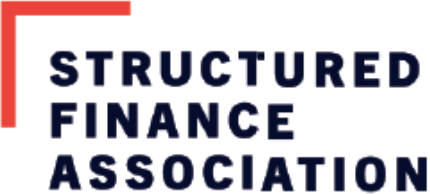SFA Overview of FIMSAC Credit Ratings Subcommittee Meeting
article by Structured Finance Association
FIMSAC Credit Ratings Subcommittee – Conflicts of Interest in the Rating Agency Compensation Model and Potential Impact on Market Structure and Efficiency
February 10th, 2020
FIMSAC Opening Statements
The meeting was opened by Brett Redfearn, Director of Division of Trading and Markets who called the meeting to order, thanked FIMSAC committee members for their ongoing involvement and participation and provided an overview of the meeting’s agenda items. SEC Commissioner Hester Peirce also gave an opening statement noting every credit rating agency compensation model “brings with it its own set of conflicts.” FIMSAC Chairman Michael Heaney introduced the first agenda item “Credit Ratings Panel Concerning Issuer-Pay Conflict of Interest” noting the topic is not a new to FIMSAC members.
Credit Ratings Panel Concerning Perceived Conflict of Interest
Amy McGarrity, Chairwoman of the Credit Rating Subcommittee highlighted the discussion draft released prior to the February 10 meeting that presented ideas debated by the Subcommittee surrounding conflicts that can arise based on who pays for a rating. Ms. McGarrity stated the document was released in part to generate feedback from industry participants and she welcomed additional comments from stakeholders and the public. She continued that while the Subcommittee has yet to reach consensus on a formal recommendation, it will continue to evaluate different compensation models. SFA understands there is currently disagreement among Subcommittee members over the pros and cons of the items contained in the discussion draft as well as unaddressed complexities inherent in this market.
Mr. Martin Fridson of Lehmann Livian Fridson Advisors and Mr. David Jacob, former Head of S&P’s Structured Finance Department from 2008 to 2012 participated as panelists and both offered their personal, anecdotal insights and perspectives on the conflicts of interests associated with the issuer-pay compensation model used by credit rating agencies.
Overall Themes
Structured Finance vs. Corporate Bond Market
- Both panelists explained how they view the current issuer-pays model in both the corporate bond and structured finance markets – citing the incentives and pressures within each market that create obstacles in developing alternative compensation models. Moreover, the panelists echoed Commissioner Peirce pointing out that the alternative proposals currently under consideration create new potential conflicts, making it difficult to chart a path forward or unite around an obvious, single alternative solution.
Rating Agency Incentives
- Mr. Jacob discussed how small changes in AAA-rated tranches can have large and lasting effects on the profitability of structured deals. He also described situations where he believed rating agencies were subjected to pressure from issuers and investors to change or deviate from the established level of credit enhancement usually required in the industry. He went on to talk about how, in his view, analysts at ratings agencies often have an incentive to produce favorable ratings because in the long run, they often want to work at an issuance firm or investment firm. Furthermore, he said he was often required to produce internal reports intended to flush out the factors or practices responsible for lost rating business. Often, he reported the rating criteria required to receive the desired ratings was deemed “too strict.”
- It was noteworthy that Mr. Jacob’s testimony also indicated S&P lost business on occasion because criteria required to receive the rating sought by issuers was more stringent than other rating agencies, and other times he received pressure from investors to increase the supply of AAA-rated bonds.
- An issuer member of FIMSAC (Scott Krohn, Verizon) explained many major corporate bond issuers rotate rating agencies no matter the criteria and stated he believes most issuers take part in this practice. According to both panelists, more of this type of behavior might help to reduce perceived conflicts. Mr. Jacob further stated that it could be beneficial if these practices were mandated. Mr. Krohn also highlighted the fact issuers are required to disclose if they hire a rating agency and do not end up using the rating they provide.
Impact of 17g-5, Unsolicited Ratings and Market Credibility
- It was acknowledged by the panelists that there has not been a lot of movement towards unsolicited ratings. Panelists confirmed there can be pressure NOT to put out certain unsolicited ratings and, in structured finance, rating agencies often do not have the proprietary information essential to issue unsolicited rating unless they are the chosen agency on the deal.
- Mr. Jacob noted that while at S&P the firm released unsolicited commentary, but the timing becomes tricky due to the small timeframe window before issuance.
Alternative Rating Agency Assignment Approach
- Ms. McGarrity noted the Subcommittee is considering asking the SEC to explore creating an entity to oversee a random assignment process for both structured products and corporate bond ratings, with at least two nationally recognized statistical rating organizations (NRSROs) being assigned to each category in order to provide diverse views. The discussion document notes that the objective of a random rating assignment model would be to remove the ability of an issuer to pressure the rating agencies.
- The panelists viewed this as a potential solution but noted that determining revenue to the rating agencies could be an issue and stated that a random assignment might be read by market participants very similar to an unsolicited rating. Mr. Jacobs further noted that he didn’t believe that it solved the perceived issue with rating agencies not wanting to give bad ratings to larger issuers noting that maybe a credit rating analyst may want to get hired by a bank known for its higher compensation.
Initial Issuance v. Surveillance Ratings
- When questioned how the SEC might discourage the deterioration of surveillance ratings due to the focus on profitability, the panelists noted that this will be difficult, and that the SEC should not be dictating or managing too much of the ratings process and procedures.
- According to Mr. Fridson, measuring performance is “a tricky proposition,” stating that market events could drastically change the rating of a company through no fault of the rating agency and that Moody’s publishes data illustrating default rates increase with each step down the ratings scale. Mr. Jacob concurred that measuring rating performance is difficult.
- An academic member of FIMSAC (Lawrence Harris of USC) stated that performance evaluation of rating agencies is, “difficult but essential” and suggested that bondholders could be required to routinely ratify one or two credit rating agencies on an annual or semi-annual basis which would help give end users of ratings more of a voice. The panelists noted that more transparency could help expose the conflicts including reporting and tracking how often a rating agency changes its ratings criteria in the issuers’ favor.
Credit Rating Beneficiaries
- It was pointed out that nearly all institutional investors can and do use their own in-house analysts to measure risk, and do not rely on credit ratings as the sole input into investment decisions. But the panelist noted smaller funds typically do not always have the capacity in-house to do similar underlying credit analyses. Regardless, the point that reliance on credit ratings alone is not good investment policy was made clear.
Next Steps
Given the SEC’s request for market feedback, SFA is forming a Task Force to monitor the ongoing discussions at FIMSAC, respond to the FIMSAC’s request for industry input and help inform engagement should a formal policy recommendation be put before the SEC. Please reach out to Alyssa Acevedo if you are interested in joining this effort.

